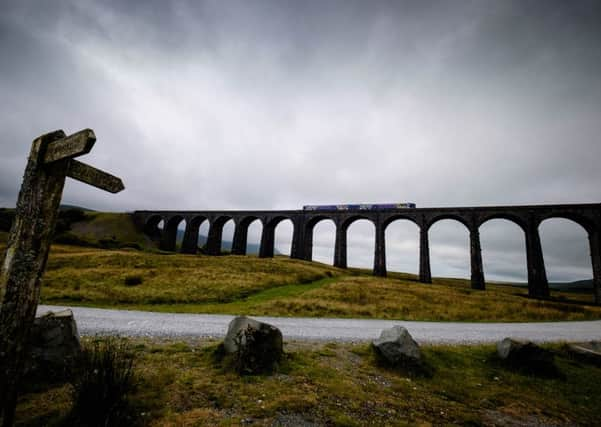Moving the earth to keep famous rail line open


Around 500,000 tonnes of earth – more than 1o times the weight of a fully loaded QE2 ocean liner – caused damage to the tracks and operators had now option but to partly close the scenic 72-mile line.
However, last month it was announced that a £23m repair project will see hundreds of concrete-filled steel tubes set into the hillside at Eden Brows to form a corridor on which a 100-metre long concrete slab will be placed, to give the railway a solid base.
Advertisement
Hide AdAdvertisement
Hide AdIf all goes to plan, the line will be fully re-opened by next March, more than a year after it was closed on health and safety grounds.
Trains have continued to run on part of the route from Leeds to Appleby since the earth gave way after weeks of downpours in February, but replacement buses were initially in place for the rest of the journey. Northern services last month began travelling as far as Armathwaite, with buses operating the rest of the way.
The re-opening will no doubt be a boost to tourism in the region, as the scenic line passes some of North Yorkshire’s finest landscapes, and offers picturesque views of the Dales and the Three Peaks to passengers. It also travels over the famous Ribblehead Viaduct.
The engineering solution was chosen by Network Rail from six possible options, which included building a bridge, digging out the entire gorge embankment and filling it with solid material, and significantly moving the course of the railway.
Advertisement
Hide AdAdvertisement
Hide Ad“If the land gives way again, the railway will not,” said Martin Frobisher, managing director for Network Rail’s London North Western route. “We are now focused on getting this much-loved line fully reopened. We recognise the impact the closure of the line between Appleby and Carlisle has had on local communities, especially during the tourist season.”
Technical details: Fujifilm X-T1 camera with a 10-24mm lens and an exposure of 1/350th sec @f8. ISO 200.